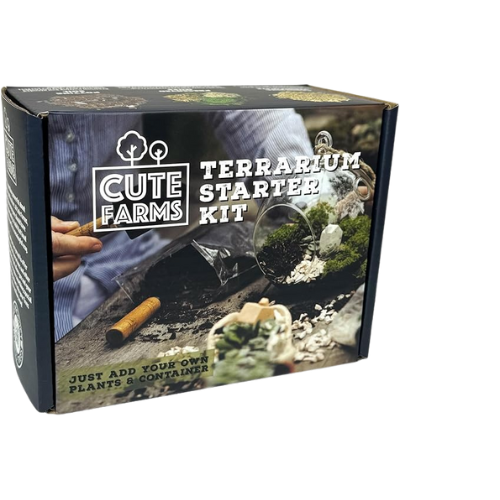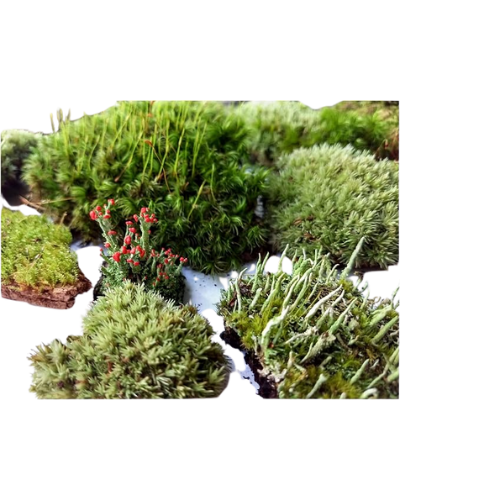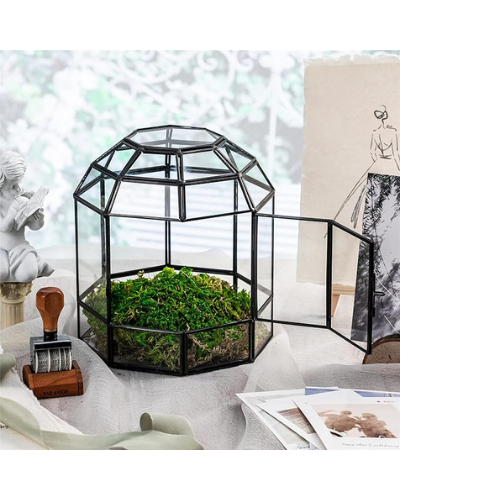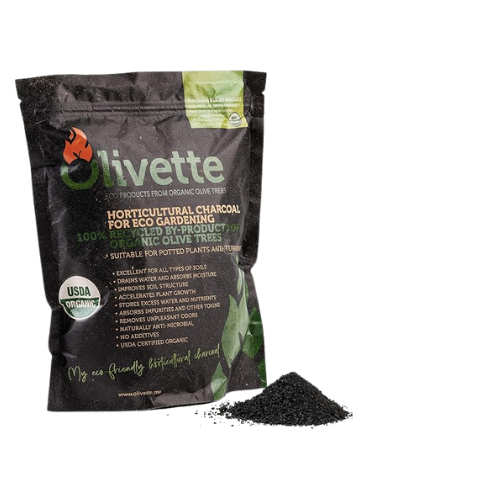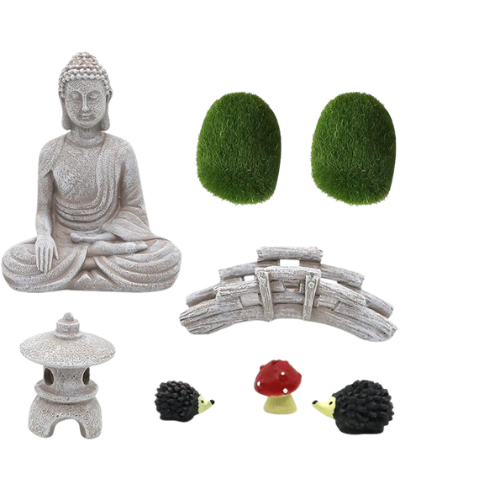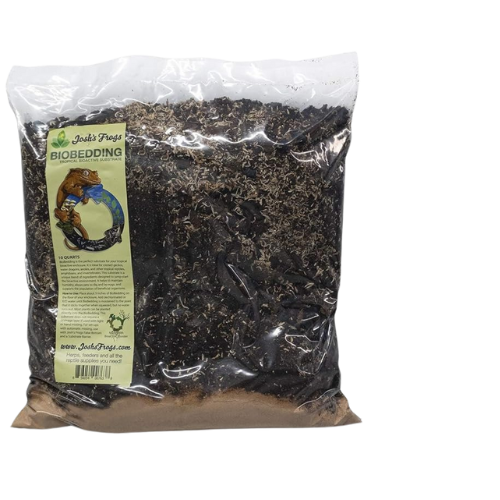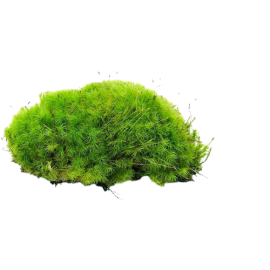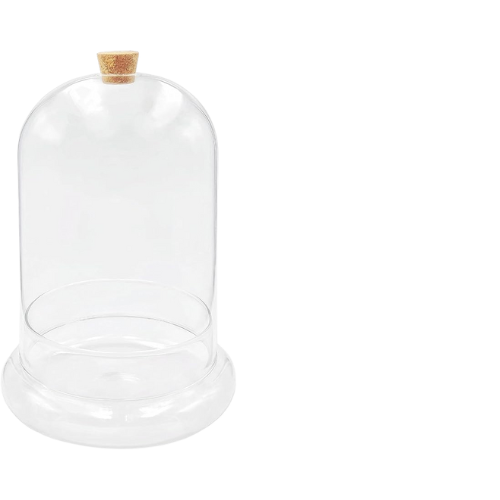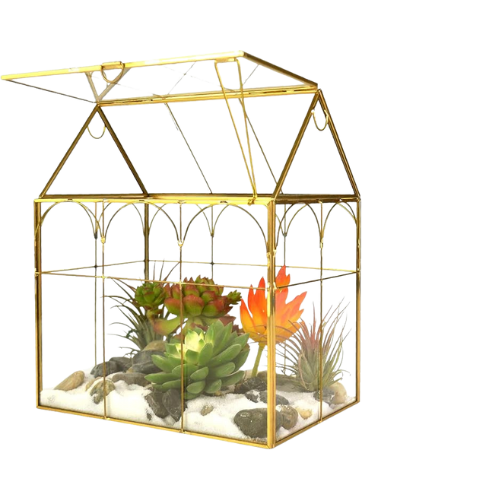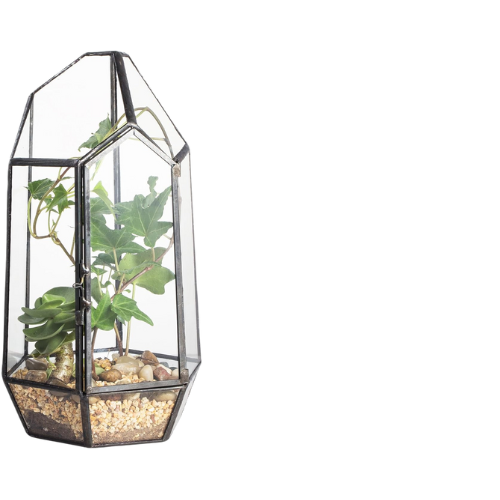Plant Terrarium Guide
Plant terrariums, created using sealed or semi-sealed glass containers, house miniature gardens or micro-ecosystems protecting them from the external environment.
Whether you’re into Boho, French-Farmhouse, Mid-Century Modern, or Dark Academia aesthetic design, plant terrariums make the perfect decor DIY.
Home / Plant Terrarium
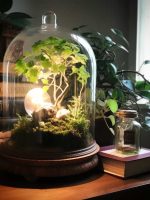
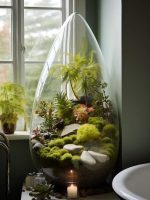
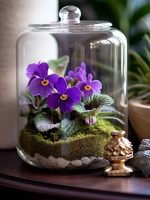
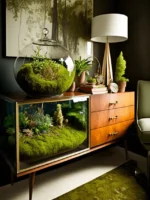
ARTICLES
With infinite choices for sizes and shapes, plant terrariums can be designed to suit a wide range of plant species, from tropical plants to succulents.
Plant terrariums present several advantages compared to other types of indoor gardens including low maintenance, humidity control, and the ability to grow exotic plant species far from their natural habitats.
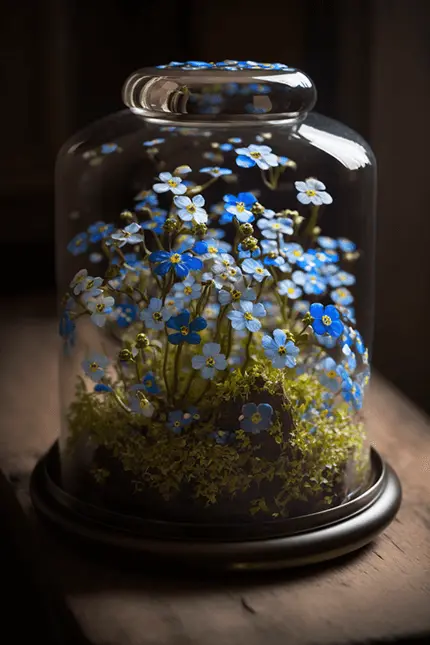
Plant Terrarium Supplies
To create a plant terrarium, you’ll need a few basic materials layered from bottom to top in the following order (Amazon links included):
- Glass container with a lid or cover – Choose a container with an open top, but keep in mind that this will require more frequent watering and maintenance
- Layer of gravel or pebbles – Use to create drainage at the bottom of the container
- Activated charcoal – Place atop the gravel to help keep the soil fresh and prevent odors.
- Potting soil – Pick a soil that suits your plant selection
- Terrarium Plants or Living Moss – Select species with similar environmental needs that will fit comfortably within the container
Moss Terrarium Starter Supplies
Base Mediums
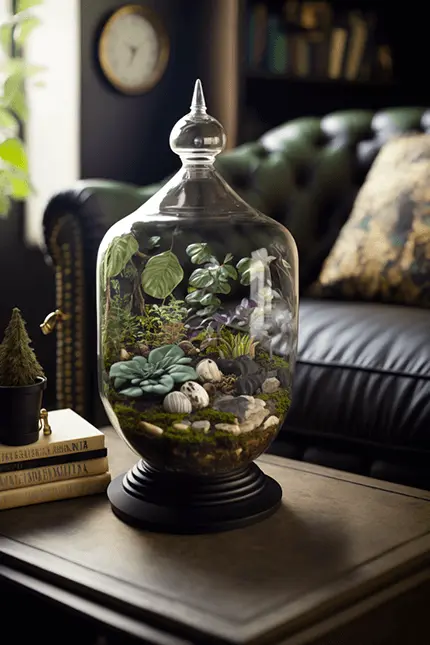
Gravel
Gravel is often used as a base layer in terrariums to provide proper drainage. The spaces between the gravel particles create channels that allow excess water to percolate down and away from the plant roots, preventing waterlogging which can cause root rot.
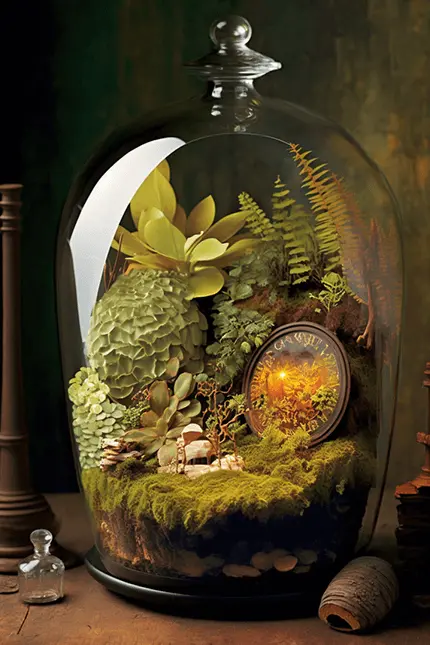
Charcoal
Activated charcoal, or horticultural charcoal, is another critical component in many terrariums, especially closed ones. It acts as a filter, purifying the water by removing odors and toxins, and helps to prevent mold and bacterial growth within the sealed environment.
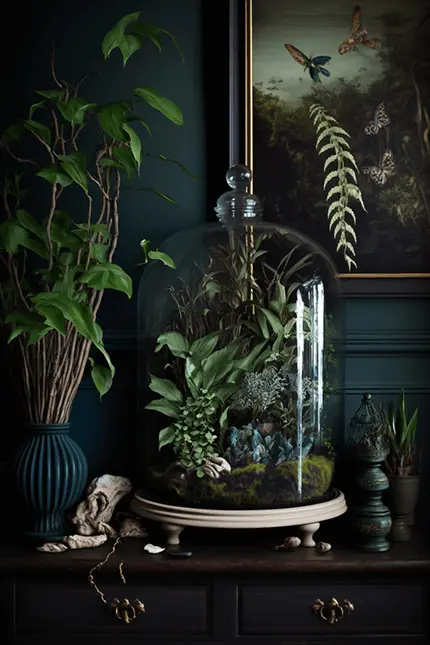
Sculptures
Sculptures in terrariums, commonly made of materials like stone, ceramic, or wood, can serve more than an aesthetic function. Their surfaces, especially if porous, can support the growth of mosses and small plants.
Sculptures can add structural complexity to the environment, creating micro-habitats and focal points within the container garden. By maintaining adequate moisture levels and providing shade, moss can be encouraged to grow on these sculptures, enhancing the naturalistic feel of the terrarium and contributing to the overall ecological balance by offering surfaces for beneficial microorganisms.
Moss
Mosses used in terrariums serve both an aesthetic and practical purpose. They create a lush, green carpet that holds moisture and improves humidity within the terrarium.
Moss also helps to keep the soil in place and can contribute to the overall health of the terrarium ecosystem by providing a habitat for beneficial microorganisms.
Potting Soil
A specific potting mix suited for terrariums is vital for providing plants with the nutrients they need. This medium typically contains a blend of peat moss, vermiculite, and perlite, creating a balance that holds moisture but is also well-draining and allows roots to grow easily.
Shop On Amazon
Glass Terrarium Containers

Greenhouse
This type of terrarium container is designed to resemble a miniature greenhouse with a rectangular shape and often has a pitched roof. It provides ample space for plant growth and allows for excellent light penetration, making it ideal for a wide variety of plants that benefit from a consistent temperature and humidity level, similar to a real greenhouse environment.

Geometric
Geometric terrariums feature modern designs with various shapes like triangles, pentagons, and other angular forms. They are often constructed with glass panes joined by a metal frame. Their aesthetic appeal is well-suited to contemporary spaces, and they can accommodate plants that require less humidity due to their often open structure.
Cloche
Originating from the French word for “bell,” cloche terrariums are bell-shaped and typically have a single piece of glass that covers the plants entirely. This design creates a microclimate with high humidity, ideal for moisture-loving plants. It’s also a classic design that can highlight a single plant specimen or a small, intricate arrangement.
Dome
Dome terrariums have a rounded top that can either be spherical or part of a sphere. This design allows for even light distribution and can create a magnifying effect on the plants inside. The curved shape helps to circulate humidity uniformly, which is excellent for mosses and ferns that thrive in moist conditions.
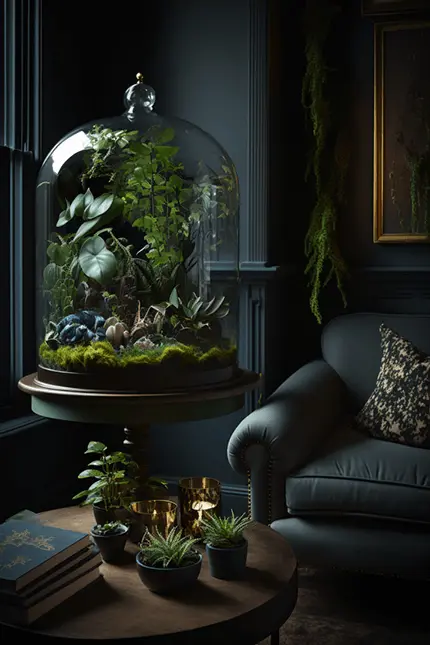
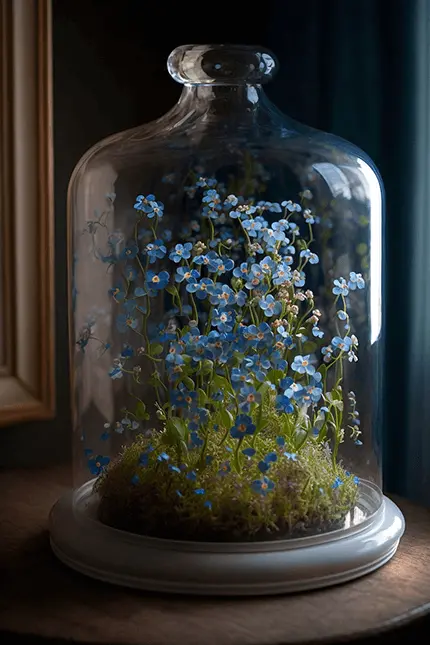
How To Make A Plant Terrarium
Step 1: Choose Your Plants
The first step in creating a successful terrarium is choosing the right plants. Consider the amount of light available in the space you are planning to put your terrarium. Some plants require more light than others, so be sure to choose plants that will thrive in the environment you have available.
You should also take into account how much moisture each plant needs. Succulents and cacti typically need less water than tropical plants, for example. Once you’ve chosen your plants, make sure you get them from a reputable source.
Step 2: Gather Supplies
Once you have chosen your plants, it’s time to gather the supplies necessary for building your terrarium. This includes a container (glass is best), potting soil, charcoal (for drainage), rocks or gravel (for drainage), and any decorations or figurines you may want to add.
Step 3: Prepare Your Container
Before adding soil and plants to your container, it’s important to make sure it is completely clean. Use warm water and mild soap to wipe down the inside of the glass container and remove any dirt or dust particles.
Step 4: Add Soil & Charcoal
Once your container is clean, it’s time to add soil and charcoal. Start by adding a layer of charcoal at the bottom of the container for drainage purposes. Next, add enough potting soil so that when you place your plants in their pots they will sit at least an inch above the top of the soil.
Step 5: Arrange Plants & Decorations
Now that everything is in place, it’s time to arrange your plants and decorations in whatever way pleases you most! Be sure not to overcrowd or over-water any of your plants – this could lead to rot or disease.
Step 6: Care & Maintenance
Your terrarium should now be ready for its new inhabitants! To keep it healthy and thriving, make sure you provide enough light (if needed), water regularly but not too much (as this can cause mold growth), and prune back any dead leaves or branches as needed.
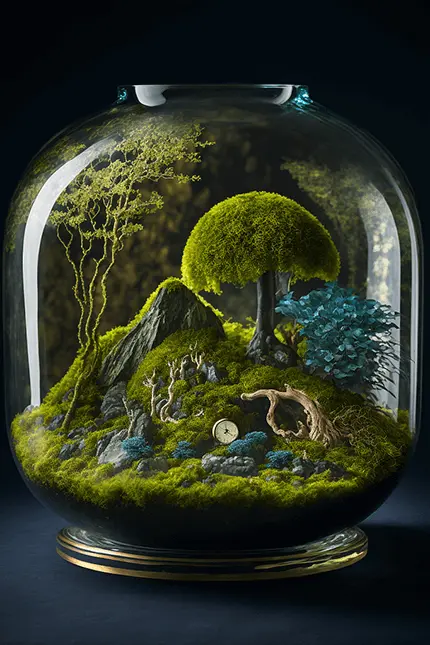
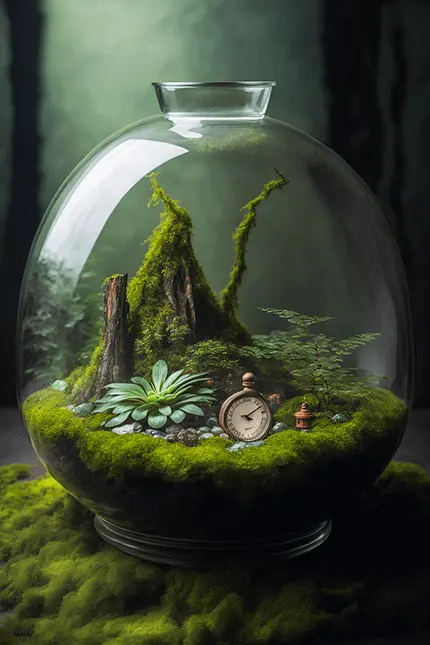
Terrarium Garden Benefits
Low Maintenance:
One of the primary advantages of a plant terrarium is that it is relatively low maintenance. Because the container is enclosed, the plants can recycle moisture and nutrients, which means that they require less watering and fertilization than traditional potted plants. This makes them a great option for people who don’t have a lot of time or who are new to gardening.
Humidity control:
Due to the enclosed nature of the container, the terrarium can help to regulate humidity levels. This can be especially beneficial for certain plants that require high levels of humidity, such as tropical plants or ferns.
Certain types of plants thrive particularly well in a terrarium environment, compared to a regular indoor environment.
Plant Varieties for Terrarium Gardens

Mosses and Miniature Plants
With their small size and low light requirements, mosses and miniature plants can be the perfect choice for a terrarium, creating a miniature forest or garden that can be enjoyed up close.
Mosses, with their velvety texture and vibrant green hues, thrive in the moist, enclosed environment of a terrarium. Their ability to grow without deep roots makes them an excellent ground cover, adding softness and depth to your miniature landscape. Pairing moss with tiny ferns, creeping plants, and other low-growing species such as baby tears (Soleirolia) or dwarf peperomias can enhance the lush, forest-like aesthetic.
Miniature plants not only add charm but also allow for intricate designs and layered compositions. Small figurines, rocks, and driftwood can complement the plants, turning the terrarium into a living piece of art. This arrangement evokes the feeling of a small-scale woodland scene, perfect for desks, shelves, or as a centerpiece.
To ensure the success of mosses and miniature plants, position the terrarium in a spot with indirect light and maintain consistent humidity by misting regularly. Terrariums with sealed or partially covered tops help retain moisture, creating the damp conditions that mosses favor. With minimal maintenance, these small-scale gardens can continue to thrive and bring natural beauty into your space.
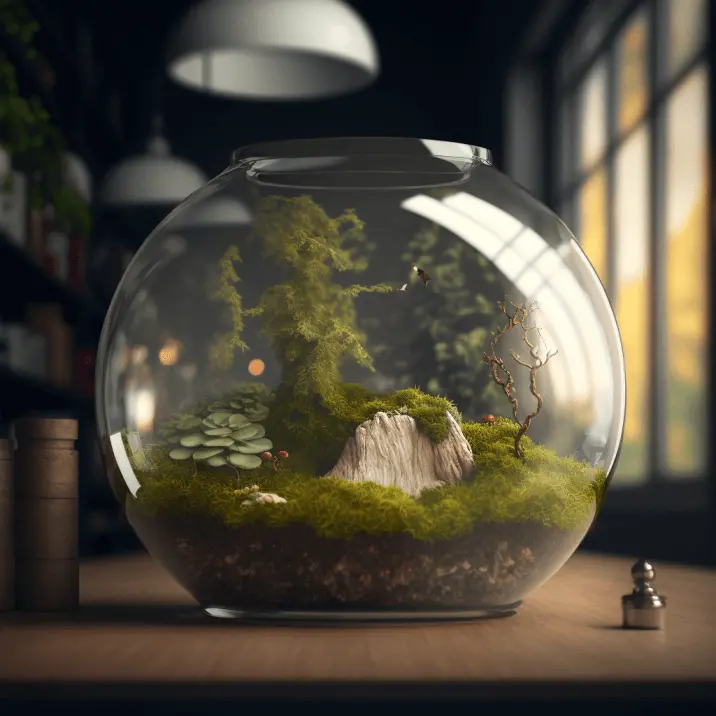
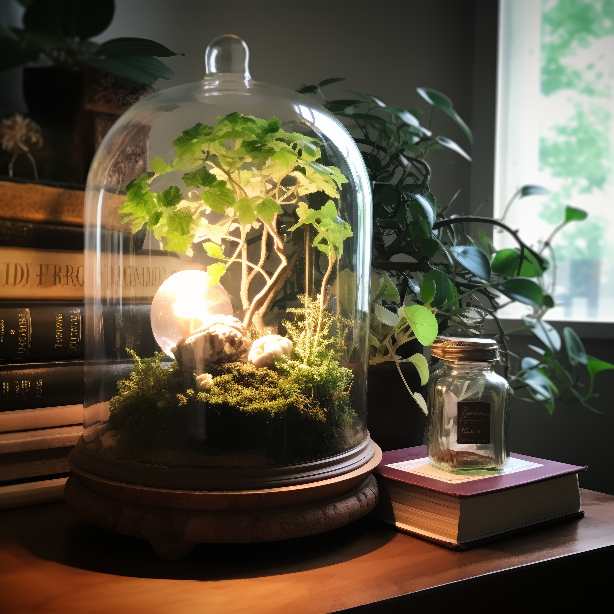
Tropical Plants
Many tropical plants prefer warm, humid environments, and a terrarium can provide just that. With its enclosed structure, a terrarium can create a humid microclimate that supports the growth of tropical plants such as ferns, bromeliads, and orchids.
In addition to maintaining high humidity levels, terrariums help regulate temperature fluctuations and protect delicate tropical plants from drafts or dry air commonly found in indoor spaces. This controlled environment is ideal for species that thrive under indirect light and consistent moisture, making tropical terrariums low-maintenance once established.
Some popular tropical plants to consider for your terrarium include mosses, calatheas, nerve plants (Fittonia), and peperomias, each contributing vibrant colors and intricate textures to your miniature ecosystem. Layering different plant heights and types can create a lush, jungle-like aesthetic that mimics the natural rainforest floor.
To ensure long-term success, use well-draining, nutrient-rich soil and incorporate elements like small stones or activated charcoal at the base to prevent waterlogging. Occasional misting and proper light placement will further encourage growth, allowing you to cultivate a thriving tropical paradise in your own home.

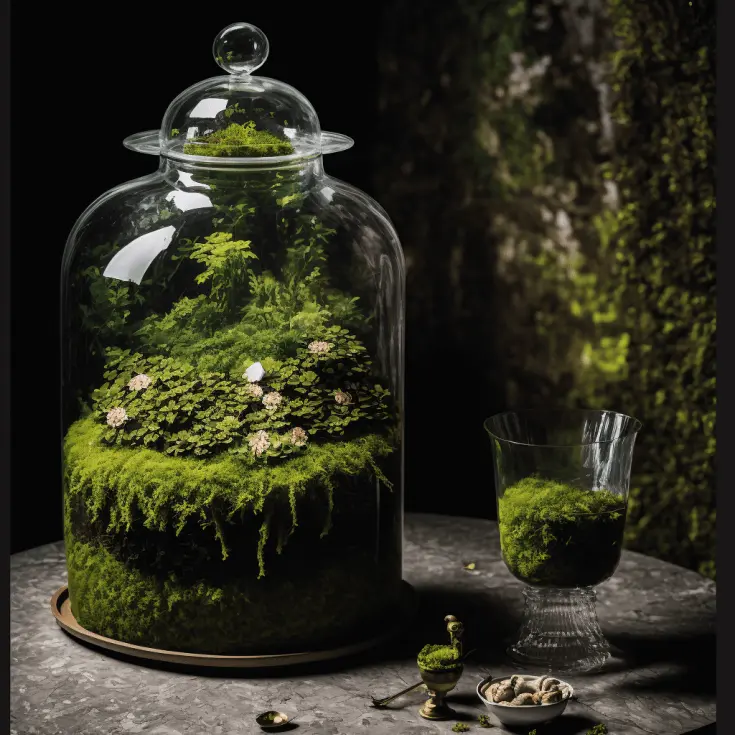
Succulents and Cacti
While some succulents and cacti can thrive in regular indoor environments, others may require more specialized care, such as a drier environment or more intense sunlight. A terrarium can provide a controlled environment that is better suited to the needs of these types of plants, allowing them to thrive in an indoor setting.
Succulents and cacti are well-known for their ability to store water, making them ideal for low-maintenance, drought-tolerant displays. In a terrarium, they benefit from proper airflow and minimal humidity, preventing rot and encouraging healthy growth. Open terrariums or shallow containers are typically the best choices, allowing excess moisture to escape while maintaining just enough warmth and light to mimic their natural desert habitats.
Consider incorporating a variety of species such as Echeveria, Haworthia, Aloe, and small cacti to create a visually striking arrangement. Layering sandy, well-draining soil with decorative rocks or pebbles can enhance both aesthetics and plant health. Adding driftwood, miniature figurines, or colored gravel can further personalize your display, transforming it into a unique indoor landscape.
By placing your succulent terrarium in a bright location with indirect or filtered light, you can enjoy vibrant, thriving plants year-round. Occasional watering and careful monitoring of light levels will ensure these hardy plants continue to flourish.
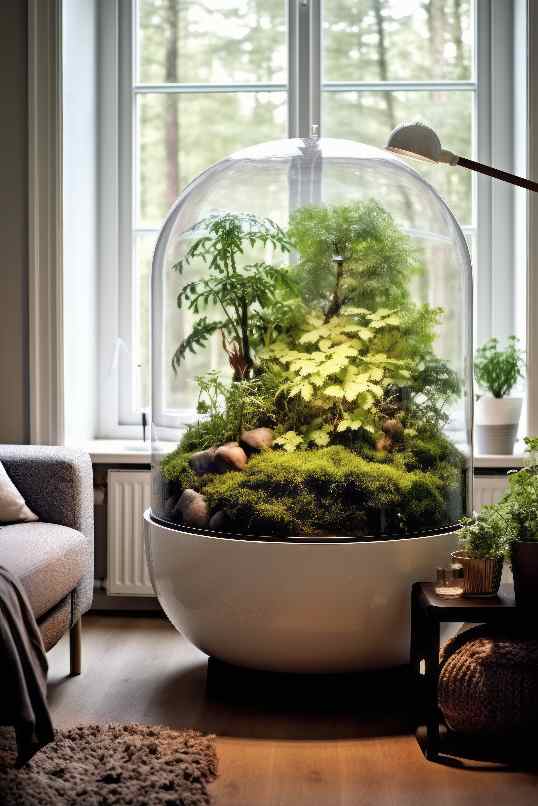
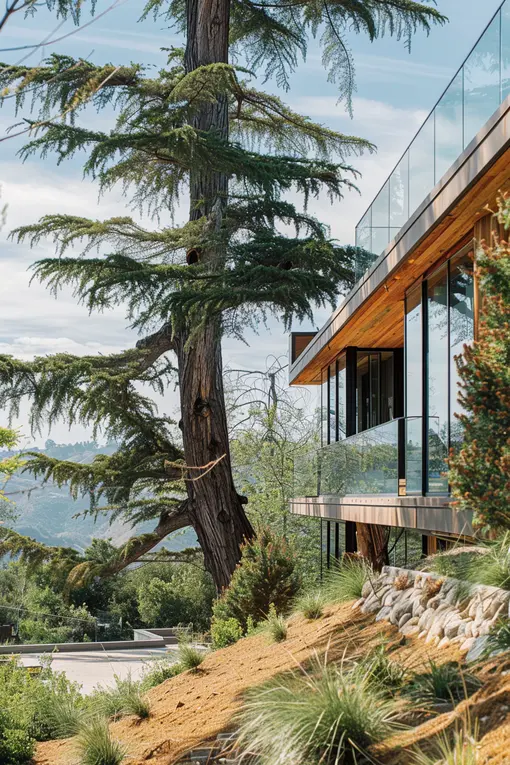
Best Plants for Erosion Control
These grasses, shrubs, and trees stabilize soil, reduce runoff, and improve infiltration through deep and extensive root systems. Learn more.
10 Proven Ways to Improve Your Health and Wellness in 2025 In today’s fast-paced
50 Boho Bedroom Ideas for a Cozy Bohemian Retreat Transform your bedroom into a
Mid-Century Modern Bedroom Ideas Mid-century modern bedrooms sweep you into a vibrant era that

